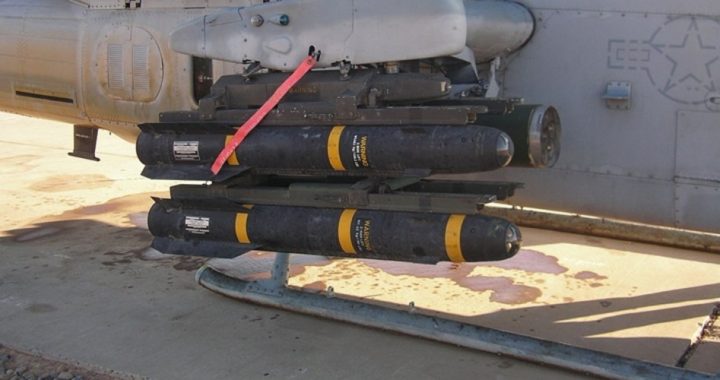
A U.S. Hellfire air-to-surface missile that disappeared after being sent to Europe for a NATO training exercise has turned up in Cuba. While no one has been able to determine exactly how this happened, it may have been an inadvertent mistake on the part of freight handlers.
However, there are other possible explanations. One unnamed U.S. official quoted by the Wall Street Journal, which broke the story, asked rhetorically: “Did someone take a bribe to send it somewhere else? Was it an intelligence operation, or just a series of mistakes? That’s what we’ve been trying to figure out.”
Investigators who attempted to trace the path of the missile said it was originally shipped in 2014 from Orlando International Airport by its manufacturer, Lockheed Martin Corp., and sent to Spain to be used in a NATO military exercise.
From there, the missile’s journey gets complicated. It was packaged in Rota, Spain, and loaded onto a truck belonging to a freight-forwarding firm, who turned it over to another shipping firm that was supposed to put it on a flight going from Madrid to Frankfurt, Germany. From Frankfurt, it was supposed to be placed on another flight bound for Florida.
Nowhere in this account was it mentioned whether or not the missile was actually used in the intended NATO exercise, and if it was, where that exercise took place. Presumably, the missile’s flight to Florida was intended to return it to the United States after the exercise was completed.
Instead of being loaded onto the Frankfurt-to-Florida flight, however, the missile was loaded on an Air France truck, which took it to Charles de Gaulle Airport in Paris. It was then loaded onto a flight to Havana!
If this scenario sounds too unbelievable to be an accident, this writer can testify from experience that nothing is impossible. On a flight from Dallas to Portland, Oregon, last October, American Airlines sent our luggage to Beijing, China! (It was returned to Oregon three days later.)
However, a Hellfire missile is not run-of-the-mill luggage. Even an unarmed Hellfire missile such as the one that went astray contains sensitive military technology. The shipping crate containing the missile was clearly marked as containing material subject to export controls and should have been handled more carefully.
The Journal report stated that U.S. officials have been urging the Cuban government to return the missile, but that has not yet happened. Although Cuba and the United States restored diplomatic relations last July, negotiations between the two nations toward ending the U.S. trade embargo on the communist nation are still ongoing, and Cuba may decide to hold on to the missile to use as a bargaining chip.
Even if the Cubans could replicate operational models of the 100-pound Hellfire missile, they would present no military threat against the United States. As an air-to-surface missile, it must be launched from either fixed-wing aircraft or helicopters, and there is scant chance such aircraft could penetrate U.S. air defenses. After being fired, its range is about 26,000 feet — or five miles. The greatest threat to U.S. security posed by the Cubans’ possession of the missile is that they might share the missile’s electronic sensors and targeting technology with countries such as Russia, China, and North Korea, who might, in turn, use it to develop their own weapons.
As historic contrast, the medium-range and intermediate-range ballistic missiles that the Soviets once deployed in Cuba — thereby triggering the famous Cuban Missile Crisis of 1962 — had ranges of up to 2,200 miles and carried nuclear warheads.
As the crisis played out over a period of 13 days (October 16-28, 1962), during which time the United States maintained a “quarantine” around Cuba to inspect all ships approaching the island to verify that they were not carrying offensive weapons, the world held its breath for fear that a war between the United States and the Soviet Union would break out. When the Soviets agreed to remove their ballistic missiles from Cuba, Americans praised President Kennedy for his strong leadership during the crisis. However, they were not aware that Kennedy had secretly agreed to remove all U.S. missiles from southern Italy and Turkey in exchange for the Soviets’ removing their missiles from Cuba. The United States also made a pledge never to invade Cuba, which dashed the hopes of Cuban exiles who thought they might receive U.S. support to return to their homeland some day.
Allowing a U.S. Hellfire missile to get into the hands of the Cubans is certainly a national security fiasco of serious proportions. However, compared to the presence of nuclear-tipped Soviet missiles in Cuba back in 1962, this latest problem seems minor.
Image: Hellfire missiles on a U.S. Marine Corps AH-1W Super Cobra helicopter
Related articles:
Obama State Department Removes Cuba From State Sponsor of Terrorism List
Putin and Xi Meeting in Moscow Reflects Increased Russian-Chinese Cooperation



